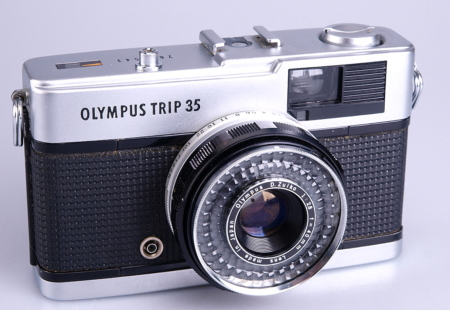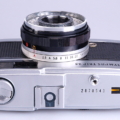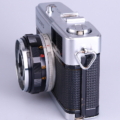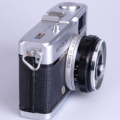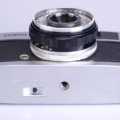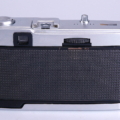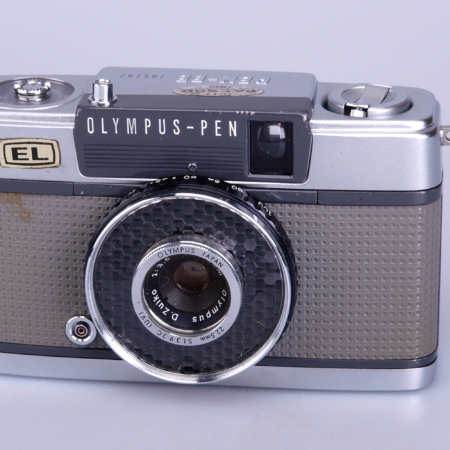The Olympus Trip 35 is a 35mm compact camera, manufactured by Olympus. It was introduced in 1967 and discontinued, after a lengthy production run, in 1984. The Trip name was a reference to its intended market – people who wanted a compact, functional camera for holidays. During the 1970s it was the subject of an advertising campaign that featured popular British photographer David Bailey. Over ten million units were sold, after the successful Pen Series camera this was the most sold camera from Olympus.
The Trip 35 was a point and shoot model with a 40mm f2.8 lens, solar-powered selenium light meter, and just two shutter speeds. In ‘A’ mode, the camera operated as a Program automatic, choosing either 1/40th sec or 1/200th sec. The camera could also sync with flash, and had a range of aperture settings, from f2.8 to f22. In flash sync mode the shutter was set at 1/40. Apart from a simple four-position zone focus system, and an ISO setting from 25–400, the camera had no other photographic controls. The camera had a Prontor-Compur sync connector and a hot shoe. Its lens was a coated Zuiko 40mm f/2.8, with four elements in three groups.
The camera had an ISO range of “only” 25–400, but this was acceptable, as films faster than 400 were uncommon and not of high image quality. 25 speed allowed the use of Kodachrome, while 400 speed allowed use of Tri-X and similar fast materials under low light.
Earlier models, from the first few years of production, had a maximum ISO speed of 200, these models are rare to find in good condition.
The four-element Tessar lens, still impressive today, gave high-quality images. If used with modern film emulsions, the results can be very good.
The use of a selenium photocell to select the shutter speeds and aperture let novices use the camera as a “point & shoot”, with good results obtained most of the time. And no battery was needed to power the camera, an important consideration when travelling where batteries might not be available.
The lack of more than two shutter speeds was not a problem. At 1/200 and f:22 with 400-speed film, the camera could deliver correct exposure in full sunlight, while at 1/40 and f:2.8, correct exposure could be obtained under bright fluorescent light, without a flash.
The aperture could also be adjusted to cope with sunny/dull conditions etc., so again this allowed for better results, but in low light conditions, with perhaps a smallish aperture (for long depth of field), the camera would probably set itself to the lower speed of 1/40th, so camera shake was a possibility if higher-speed film was not used.

